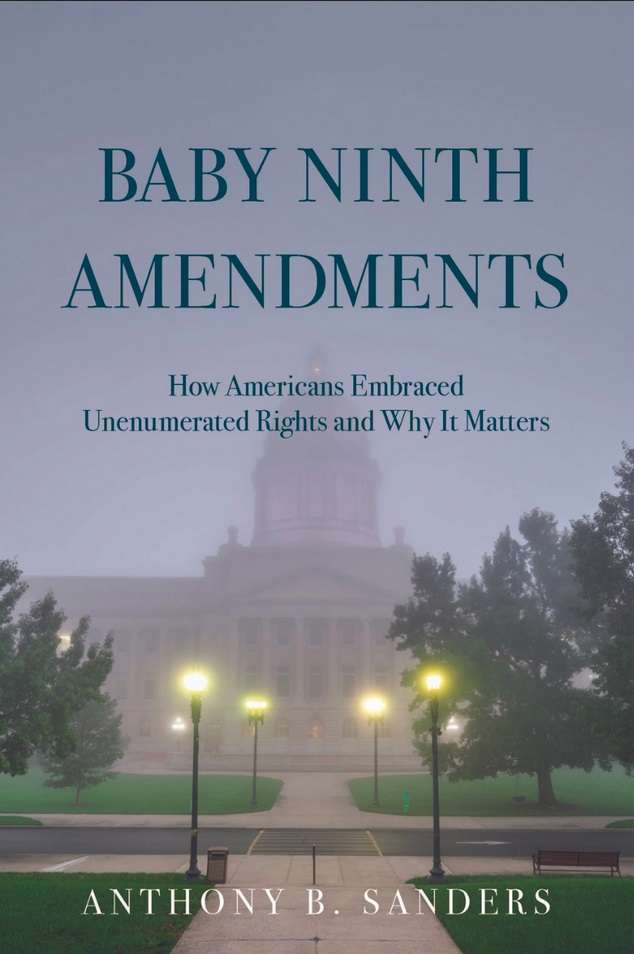Thank you to everyone who has read and commented on my posts this week. It’s been so much fun! And thanks again to Eugene and his co-conspirators for the opportunity. After this final edition I will go back to assisting my colleague John Ross with his Short Circuit newsletter, which he posts here every Friday.
You can see the previous four posts in this series here, here, here, and here, all of which summarize my new book from the University of Michigan Press, Baby Ninth Amendments: How Americans Embraced Unenumerated Rights and Why It Matters (available for free here).
Today I’m going to give an example of how a Baby Ninth should work in practice, briefly address a potpourri of issues I haven’t had space for, and close with some big picture thoughts about what Baby Ninths mean for how we look at American constitutionalism more generally.
In the book I talk about some food truck cases we’ve done at IJ, where cities block food trucks from operating for protectionist reasons that aren’t plausibly related to public health and safety. Let’s suppose you’re one of them. You want to park your truck in the lot of an office building. The building’s owners also want you to park there—they like that their tenants can buy lunch from your truck. But there’s a city ordinance that prohibits you from parking within 500 feet of a restaurant, even if you’re on private property. And there are other restaurants on the building’s street within that distance.
Now let’s say you live in a state with a Baby Ninth. Does this law violate one of your rights “retained by the people”? Well, it certainly seems to get in the way of your right to contract with the building’s owners and your right to earn a living by selling from there. But, as I said yesterday, that in itself doesn’t mean the city has violated the state constitution. These rights aren’t absolute. The city could defeat a claim you might bring if, based on real facts, it can show it’s needed to further a legitimate public purpose. That would allow the city to demonstrate that in this case, your asserted right—to the degree that it’s implicated—is not actually “retained” but has been given up to the government in the social contract bargain.
In this case you should prevail. It’s unlikely the city can show the truck causes any public problems just because it’s within 500 feet of a restaurant. For other regulations you might have to abide by, such as fire restrictions, litter control, or food safety rules, the story could be very different. But suppressing competition isn’t enough. “We’re living in a society!” doesn’t mean we delegate to the government the power to simply pick winners and losers.
Notice this is stronger than “rational basis review,” as it’s currently practiced in federal and in (most) state constitutional law, but it’s not necessarily strict scrutiny. It’s not even necessarily a presumption against the government. Perhaps my indifference on these shades comes from my years of litigating under the rational basis test, but I’ve found for most questionable laws you don’t need strict scrutiny to be able to constitutionally defeat them; you just need the kabuki theatre of the rational basis test to go away. Then judges can actually take your facts and arguments seriously. This is hardly radical stuff.
And now, as Larry King used to do, some news and views on a few other issues.
The Ninth Amendment itself. When I discuss my book, I’ve noticed people here and elsewhere often want to talk about the Ninth Amendment itself, or how they can use it do to X legal thing, ignoring the state constitutional side of things. This is an unsurprising result of the focus so many of us have on the U.S. Constitution. But it’s a bad habit. Again, unless you’re up against the federal government itself, your state constitution is potentially just as useful in fighting the government as the U.S. version. Looking at Baby Ninths isn’t just a way to think about the U.S. Constitution—although it can be, as I conclude below. Primarily, it’s a way to actually do something real concerning state and local government. State constitutional law is neglected in law school and even more so in legal media, but that doesn’t mean you should too. Go read your state constitution. If you’re a lawyer and interested in bringing a civil rights case—especially if it’s pro bono—think about using the state constitution, including a state’s Baby Ninth.
Variations. Most Baby Ninths are almost identical to the Ninth itself, with “impair” often used and “construed” sometimes dropped. I don’t think this makes a material difference, but I talk about it a bit in the book. There are a handful with more differences. Minnesota and Mississippi have “retained by, and inherent in, the people.” I also don’t think that’s material. Then there’s Georgia and Virginia. Georgia’s is super interesting. Read my book (pp. 131-32) to find out why! And other than Georgia’s, Virginia’s is the only one without “retained.”
More direct language. Professor Mitchell Gordon at St. Thomas (MN) has a wonderful article about the oddness of the Ninth Amendment. I’ll admit, the language can be a little mystifying. So why did state delegates use it to protect unenumerated rights? They could have just said “there are other rights retained by the people and they are also protected by this Constitution just as much as the foregoing.” I think they used the Ninth instead because it was “off the shelf,” so to speak. This happens a lot in state constitutional law, with states borrowing from what the feds and others have done instead of drafting anew. Could Baby Ninths have been written differently? Sure. But that doesn’t mean they don’t protect Lockean rights.
The name. I’ve seen a couple people object to the nickname. As I’m more than upfront about in the book, I didn’t invent it. John Yoo and Akhil Amar did (one in print, one in lectures). But I like it! As John Yoo wrote, it follows from the nickname “Baby FTC Acts” which many states have for consumer protection laws. It’s not that states are babies, it’s just that all Baby Ninths chronologically came after the Ninth itself. The same isn’t true of other provisions, such as the Fourth Amendment.
In the end, what’s going on with Baby Ninths? Yes, they’re “etcetera clauses,” but is there a complementary way to think about why we have them? Via some mild speculation, in the book’s afterword, I theorize that what might be going on is a bit of a compromise. As a commentator said, Americans like unenumerated rights, but often don’t like specific examples of unenumerated rights. Going into a constitutional convention many delegates will have rights they like and rights they don’t care about. In adopting an unenumerated rights clause (whether a Baby Ninth, a Lockean Guarantee, or something else), they know that it could be interpreted to protect all of those rights. And yet they’ve included these provisions over and over again anyway. Why? Perhaps because they’re erring on the side of liberty. Yes, the provisions might be interpreted in the future to protect a right the delegate isn’t a fan of, but it also might protect rights she cares deeply about. So she and her various other delegates will err for more freedom instead of not having unenumerated rights at all and giving the state—dare I say Leviathan—more power.
It’s also telling that no state has adopted a provision that says something like “there are no unenumerated rights.” Or even “courts must enforce unenumerated rights very sparingly.” Dog/bark?
Finally, what does the story of Baby Ninths tell us about the U.S. Constitution? It doesn’t help us directly interpret the Constitution’s text. But it does demonstrate that far from unenumerated rights being something that Americans shun, they’re something that’s normal. Popular, even! And those same Americans who adopted a Baby Ninth sixty-six different times in U.S. history also wrote and amended the Constitution itself. When we’re reading the U.S. Constitution, we should be thinking: “Unenumerated rights provisions are common for Americans when they write constitutions. It wouldn’t be surprising if there was one in this document as well.”
I’ll leave you with my book’s epigraph. Thank you for reading.
Anna: Oh, yes, I’m sure we could see many things . . . such as iron bars, guards at the doors, et cetera, et cetera.
The King: What is this “et cetera”?
Anna: Well, it means “and all the rest and so forth,” Your Majesty.
—The King & I
The post Baby Ninth Amendments Part V: Real Life, Potpourri, and the Big Picture appeared first on Reason.com.






